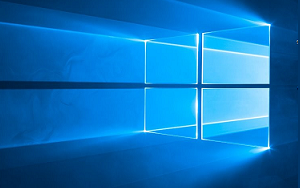Adding a signature in Gmail enhances your email professionalism and provides essential contact information. This guide provides detailed steps on how to create, customize, and manage your email signatures effectively.
Introduction
In the digital age, email communication is pivotal, and Gmail is among the most popular email platforms worldwide. Adding a signature to your Gmail account is not just a matter of style; it's a professional necessity. A well-crafted signature can convey your brand, provide essential contact details, and enhance your professional image. This article will guide you step-by-step through the process of adding a signature in Gmail, providing tips on customization and management for optimal impact.
Why Add a Signature to Your Gmail?
Before diving into the technical steps, it is important to understand why a signature is crucial:
- Professionalism: A signature adds a touch of professionalism to your emails.
- Branding: It helps in personal or business branding.
- Information: Provides recipients with your contact information easily.
- Consistency: Ensures all recipients get the same information every time.
Steps to Add a Signature in Gmail
Follow these detailed steps to add a signature to your Gmail account:
1. Access Gmail Settings
- Open your web browser and go to Gmail.
- Log in using your email address and password.
- In the top right corner, click on the Gear icon to open the "Settings" menu.
- Select See all settings from the dropdown menu.
2. Navigate to the Signature Section
- Once in the settings, click on the General tab.
- Scroll down until you find the Signature section.
3. Create a New Signature
- Click on the Create New button.
- A pop-up will appear; enter a name for your new signature and click Create.
- In the text box provided, type your signature. You can include your name, job title, company, phone number, and any other relevant information.
4. Customize Your Signature
Gmail offers various formatting options to customize your signature:
- Text Formatting: Use the toolbar to change the font, size, and color of your text.
- Links: Add hyperlinks to your website or social media profiles.
- Images: Insert images, such as a company logo, by clicking the Insert Image icon.
- Layout: Use tables or lines to organize your information neatly.
5. Set Default Signature
- In the same section, choose your newly created signature from the dropdown menu for New emails use and On reply/forward use.
- This ensures your signature is automatically added to new emails and replies.
6. Save Changes
After creating and customizing your signature, scroll down to the bottom of the settings page and click Save Changes to apply the new signature to your emails.
Tips for Effective Email Signatures
Creating a signature is just the first step. Here are some tips to make your signature more effective:
- Keep It Simple: Avoid clutter; include only essential information.
- Use Branding Elements: Incorporate your brand colors and logo for consistency.
- Ensure Readability: Use legible fonts and sizes for easy reading.
- Include Call to Action: Add a simple call to action, like "Visit our website" or "Follow us on social media."
- Test Your Signature: Send test emails to yourself to see how the signature appears on different devices.
Troubleshooting Common Issues
If you encounter issues while setting up your signature, consider the following solutions:
- Signature Not Appearing: Ensure you selected the signature in the default settings for new emails and replies.
- Formatting Issues: Double-check the HTML code if you are using HTML signatures.
- Image Not Displaying: Ensure the image URL is correct and publicly accessible if using an online image.
Conclusion
Adding a signature in Gmail is an effective way to enhance your professional communication. By following the steps and tips outlined in this guide, you can create a signature that not only conveys your essential information but also leaves a lasting impression on your recipients. Regularly update your signature to reflect any changes in your contact details or branding, ensuring it remains relevant and professional.







